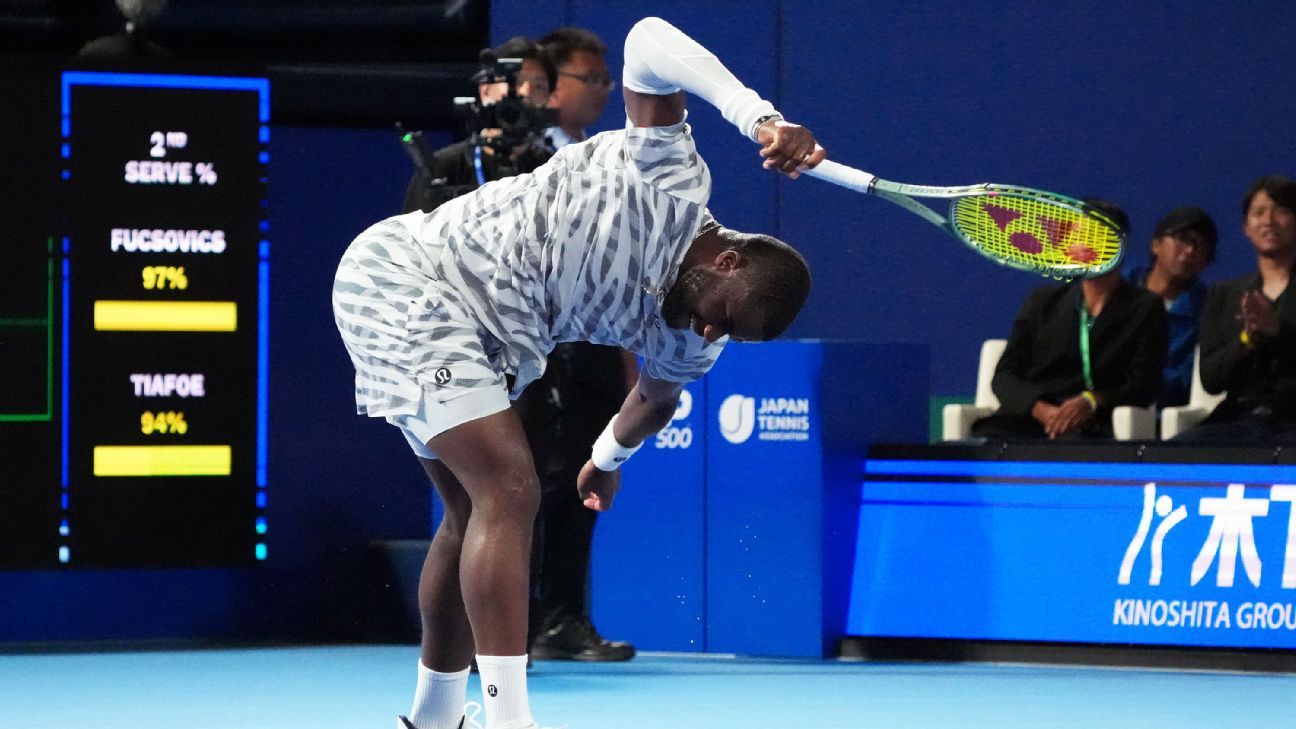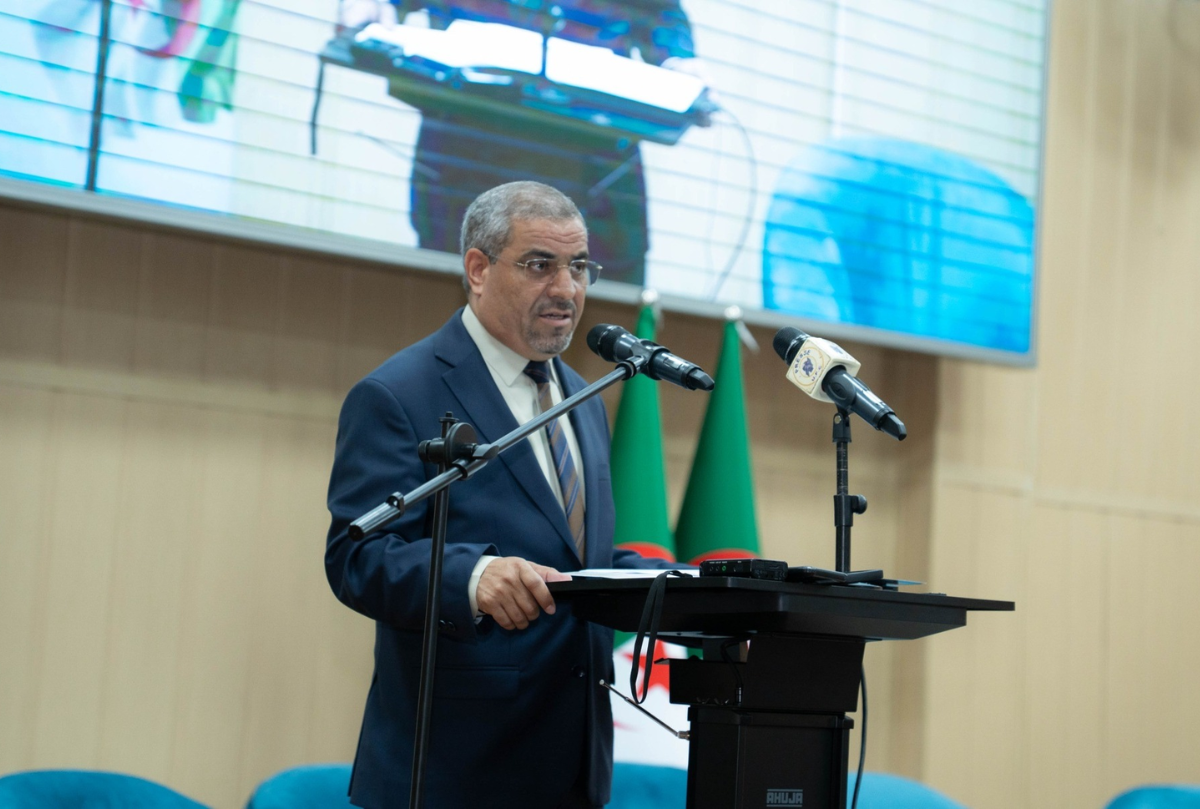‘Journalist’ gets rattled after ex-CJI highlights how construction of mosque atop Ram Mandir was desecration: Read how the addendum to Ayodhya verdict confirms Hindu beliefs
In a recent interview with the former Chief Justice of India DY Chandrachud, ‘independent journalist’ Sreenivasan Jain flogged the dead horse by casting aspersions on the Supreme Court verdict in the Ayodhya Ram Mandir case. Based on certain critical comments on the Supreme Court judgment, Jain claimed that the verdict rewarded the “illegal act” committed by the Hindus in asserting their claim on the inner courtyard (where the disputed structure stood), and “punished” the Muslim side, which did not lay claim on the outer courtyard (where the Ram Lalla Virajmaan was seated in a makeshift temple). The "very erection" of Babri mosque was the "fundamental act of desecration", DY Chandrachud tells me. A startling statement — all the more given the verdict he co-authored clearly says no evidence was supplied to show if the earlier structure was demolished to build a… pic.twitter.com/wyEj7UMgqq— Sreenivasan Jain (@SreenivasanJain) September 24, 2025 “The idea that the inner courtyard contested was also a result of the Hindus committing illegal acts like desecration, asserting their rights and creating disturbances; the fact that the Muslims didn’t do that in the outer courtyard, didn’t contest it, then becomes almost a ground to punish them; the fact that you (Muslims) didn’t put up a fight while Hindus did actually weighs against the Muslims, is one critical reading of the verdict,” asserted Sreenivasan Jain. Original act of desecration was the erection of the mosque: Chandrachud Responding to Jain’s claim, former CJI Chandrachud reminded him that the original act of desecration, which was conducted by Muslims by erecting a mosque on the ruins of a Hindu temple, cannot be overlooked. “When you said that the Hindus were desecrating the inner courtyard, what about the fundamental act of desecration, the very erection of the mosque, we forget all that happened in history. Now, once you accept that that happened in history, and we had evidence in the form of archaeological evidence, how can you shut your eyes?” said the former CJI, who was part of the Constitutional bench, which decided the Ayodhya dispute. Those criticising the verdict have a selective view of history: Chandrachud Refuting the critical comments on the judgment, referred to by Jain, Chandrachud said that those who criticised the verdict, and insinuated that the judiciary acted in a partisan manner by deciding in favour of the Ram Temple, have a selective view of history. “What is really being done by many of these commentators that you have referred to is that they have a selective view of history. They ignore evidence of what happened beyond a certain period of history and start looking at the evidence which is of a more comparable nature,” said Chandrachud. In an effort to delegitimise the top court’s decision, Jain said, “I thought the judgment found that there was no evidence that the underlying structure was necessarily demolished to build the mosque because there was a gap of several centuries between the underlying structure and the mosque.” To which Chandrachud categorically replied, “There was adequate evidence from the archaeological excavation…there is evidence in the form of the archaeological report”. Calling out the people who have been raising suspicions about the Supreme Court verdict, Chandrachud remarked that those are the people who have been picking and choosing historical facts to peddle their narrative. “Let’s face it. Ultimately, people who have criticised the judgment want to ignore the fundamental history of the mosque, and then look at the more comparative history, at selective elements of that history that support what they postulate”, said the former CJI. He stated that the judgment was purely based on the law and the legal principles and that the claim that the decision was based on faith rather than evidence is unfounded. “The Supreme Court’s judgment applies the conventional yardstick of determining adverse possession. It’s on the basis of the evidence and the conventional yardsticks which we have applied that we have come to this conclusion. “The criticism that the judgment is based on faith and not evidence is the criticism by the people, I dare say, who have not read the judgment,” he added. Jain’s claim that the Muslim side got punished for not asserting their claim on the site, within the disputed area, where Hindus have been offering prayers, sounds ridiculous. What else would qualify as a ‘claim’ better than the mosque itself, which stood over the ruins of a Hindu temple, and on a piece of land that did not even belong to the Muslims in the first place? In fact, Ayodhya Janmabhoomi is not the only site where the Muslims asserted their claims. The country is full of numerous such examples, which are testimony to how the Muslims have historically been asserting their ‘claims’ on the ruins of the faith of the Hindus. Several such ‘claims’ stand tall to date on the ruins of Hin



The "very erection" of Babri mosque was the "fundamental act of desecration", DY Chandrachud tells me.
— Sreenivasan Jain (@SreenivasanJain) September 24, 2025
A startling statement — all the more given the verdict he co-authored clearly says no evidence was supplied to show if the earlier structure was demolished to build a… pic.twitter.com/wyEj7UMgqq
“The idea that the inner courtyard contested was also a result of the Hindus committing illegal acts like desecration, asserting their rights and creating disturbances; the fact that the Muslims didn’t do that in the outer courtyard, didn’t contest it, then becomes almost a ground to punish them; the fact that you (Muslims) didn’t put up a fight while Hindus did actually weighs against the Muslims, is one critical reading of the verdict,” asserted Sreenivasan Jain.
Original act of desecration was the erection of the mosque: Chandrachud
Responding to Jain’s claim, former CJI Chandrachud reminded him that the original act of desecration, which was conducted by Muslims by erecting a mosque on the ruins of a Hindu temple, cannot be overlooked.
“When you said that the Hindus were desecrating the inner courtyard, what about the fundamental act of desecration, the very erection of the mosque, we forget all that happened in history. Now, once you accept that that happened in history, and we had evidence in the form of archaeological evidence, how can you shut your eyes?” said the former CJI, who was part of the Constitutional bench, which decided the Ayodhya dispute.
Those criticising the verdict have a selective view of history: Chandrachud
Refuting the critical comments on the judgment, referred to by Jain, Chandrachud said that those who criticised the verdict, and insinuated that the judiciary acted in a partisan manner by deciding in favour of the Ram Temple, have a selective view of history. “What is really being done by many of these commentators that you have referred to is that they have a selective view of history. They ignore evidence of what happened beyond a certain period of history and start looking at the evidence which is of a more comparable nature,” said Chandrachud.
In an effort to delegitimise the top court’s decision, Jain said, “I thought the judgment found that there was no evidence that the underlying structure was necessarily demolished to build the mosque because there was a gap of several centuries between the underlying structure and the mosque.” To which Chandrachud categorically replied, “There was adequate evidence from the archaeological excavation…there is evidence in the form of the archaeological report”.
Calling out the people who have been raising suspicions about the Supreme Court verdict, Chandrachud remarked that those are the people who have been picking and choosing historical facts to peddle their narrative. “Let’s face it. Ultimately, people who have criticised the judgment want to ignore the fundamental history of the mosque, and then look at the more comparative history, at selective elements of that history that support what they postulate”, said the former CJI.
He stated that the judgment was purely based on the law and the legal principles and that the claim that the decision was based on faith rather than evidence is unfounded. “The Supreme Court’s judgment applies the conventional yardstick of determining adverse possession. It’s on the basis of the evidence and the conventional yardsticks which we have applied that we have come to this conclusion. “The criticism that the judgment is based on faith and not evidence is the criticism by the people, I dare say, who have not read the judgment,” he added.
Jain’s claim that the Muslim side got punished for not asserting their claim on the site, within the disputed area, where Hindus have been offering prayers, sounds ridiculous. What else would qualify as a ‘claim’ better than the mosque itself, which stood over the ruins of a Hindu temple, and on a piece of land that did not even belong to the Muslims in the first place? In fact, Ayodhya Janmabhoomi is not the only site where the Muslims asserted their claims. The country is full of numerous such examples, which are testimony to how the Muslims have historically been asserting their ‘claims’ on the ruins of the faith of the Hindus. Several such ‘claims’ stand tall to date on the ruins of Hindu temples.
This is not the only instance where unfounded suspicions have been raised against the Supreme Court decision in the Ayodhya dispute. A certain lobby of people, including academicians and Historians, has been peddling false narratives using a whitewashed version of history to make a case for the mosque. The battle to reclaim the Ram Janmabhoomi went on for several decades and passed through several courts, and during this time, both parties had the full opportunity to put forward their arguments and evidence. Following a centuries-long struggle, which started in 1528 with the construction of the mosque, the dispute was finally settled with the Supreme Court’s verdict in 2019. After examining a plethora of evidence and hearing the detailed arguments of the Hindu and the Muslim sides, the Constitutional bench, which, notably, also included a Muslim (former) judge, Justice S. Abdul Nazeer, decided that the disputed site belonged to Lord Ram. The Supreme Court accepted the ASI report, which confirmed the presence of a Hindu structure beneath the Mosque. It also accepted that the auspicious site has always been sacred to Hindus. Apart, from the archaeological evidence, history is full of documentary evidence, which prove how the Hindus have always considered the site as Ram Janmabhoomi.
Historical evidence in favour of Ram Janmabhoomi
An addendum to the Supreme Court judgment by an unnamed judge went into depth of the beliefs of the Hindus regarding Ram Janmabhoomi by referring to certain Historical evidence, including Ain-i-Akbari, accounts of an English merchant William Finch, accounts of a Jesuit missionary Father Joseph Tieffenthaler and a description in Janma Sakhies of Guru Nanak’s visit to Ayodhya.
Ain-i-Akbari
Ain-i-Akbari, a 16th-century document written by Mughal Emperor Akbar’s court historian, Abu’ l Fazl, in the Persian language, mentioned Ayodhya as the residence of Ramachandra, who was further described as an Avatar, i.e., an incarnation of Vishnu. The document refers to Ayodhya as one of the holiest places of antiquity. A specific statement in the document said that during the Treta Yuga on the ninth of the light half of the month of Chaitra in the city of Ayodhya, the wife of Kausalya of Raja Dasaratha, Lord Ram was born.”
Accounts of William Finch
A similar reference to Ayodhya is found in the accounts of William Finch, who was an English merchant in the service of the East India Company (EIC). He travelled to India along with Captain Hawkins during the reign of Mughal emperor Jehangir. In his travel accounts, Finch mentioned the ruins of Ramachandra’s castle and houses. He also noticed the belief of Indians that Ramchandra was born, who took flesh upon him.”
Accounts of Father Joseph Tieffenthaler
Father Joseph Tieffenthaler, a Jesuit missionary who visited India between 1766 and 1771 A.D, wrote the historical and geographical description of India in Latin, which was later translated into French. English translation of the work was filed before the High Court as Ext. 133 (Suit-5) and the Court extensively relied on it. The Supreme Court judge drew three important conclusions from his account. The judge stated, “First, that Emperor Aurengzebe got the fortress called Ramcot demolished and got a Muslim temple, with triple domes, constructed at the same place. It further states that fourteen black stone pillars of 5 spans high, which had existed at the site of the fortress, are seen there. Twelve of these pillars now support the interior arcades of the mosque. Two (of these 12) are placed at the entrance of the cloister.”
“Second that, on the left is seen a square box raised 5 inches above the ground, with borders made of lime, with a length of more than 5 ells and a maximum width of about 4 ells, which is called Bedi (i.e. the “cradle”) by the Hindus. The reason for the faith and belief was also that there was a house where Beschan (Vishnu) was born in the form of Ram.” And finally, “Third, that Aurengzebe or Babar got this place razed in order to deny the noble people the opportunity of practising their superstitions. However, there still exists some superstitious cult in some place or other. Since in the place where the native house of Ram existed, the Hindus go around 3 times and prostrate on the floor”.
Guru Nanak’s visit to Ayodhya
The addendum also referred to the Janma Sakhies, which record a description of Guru Nanak’s visit to Ayodhya. They mention that Guru Nanak had visited Ayodhya for Darshan of Ram Janma Bhumi in the year 1510 AD, even before the construction of the mosque in 1528. This record supports the claim of Hindus that there was a temple in Ayodhya which was regarded as the birthplace of Bhagwan Ram, the judge said.
Besides, the fact that the mosque was commonly referred to as the “Janma Sthan Mosque” in various British government documents also proved that there was a common understanding about the mosque existing on a ‘Janam Sthan’ or birthplace. The addendum concluded with the remarks, “It is thus concluded on the conclusion that faith and belief of Hindus since prior to construction of Mosque and subsequent thereto has always been that Janmaasthan of Lord Ram is the place where Babri Mosque has been constructed which faith and belief is proved by documentary and oral evidence discussed above.”



























































































































